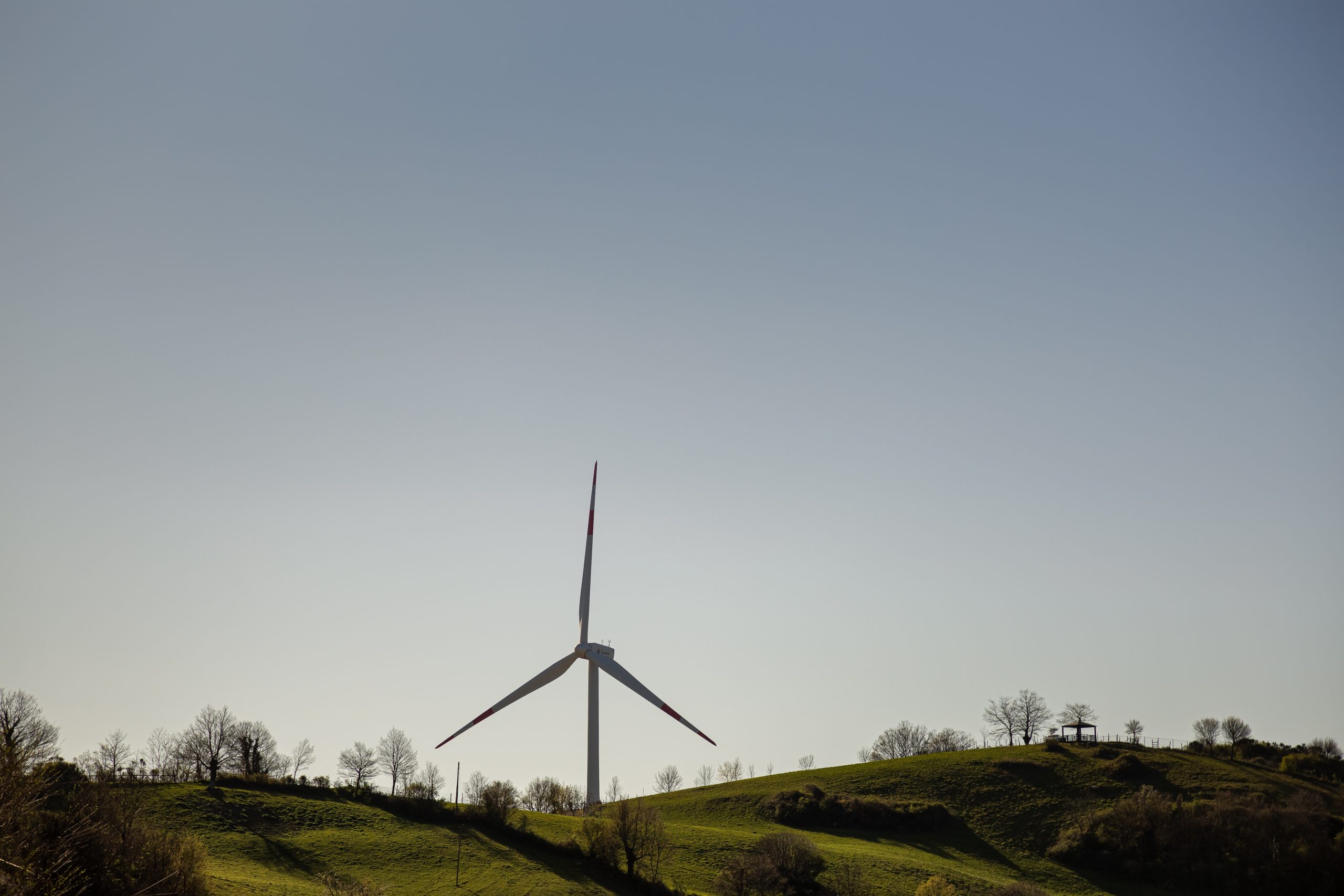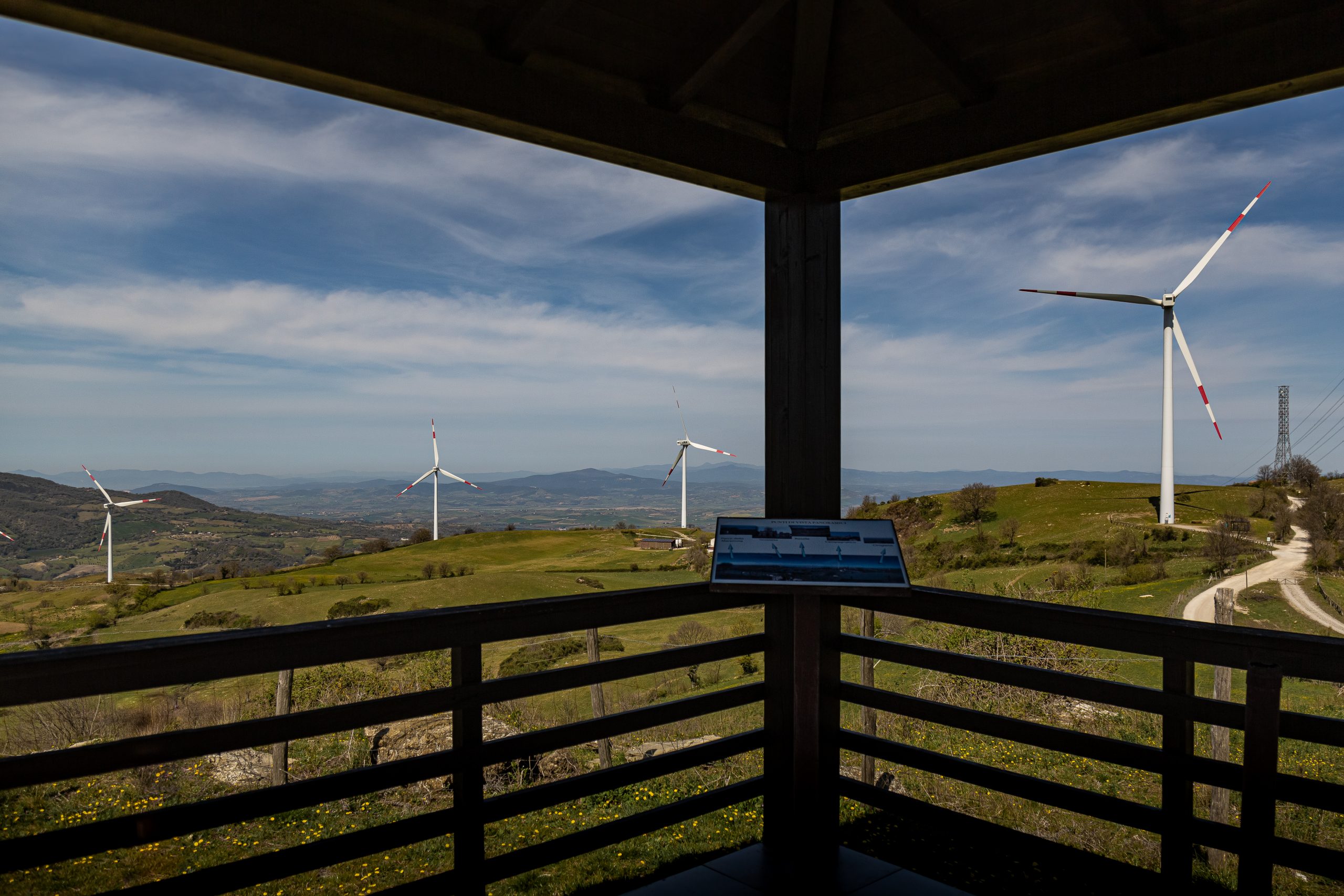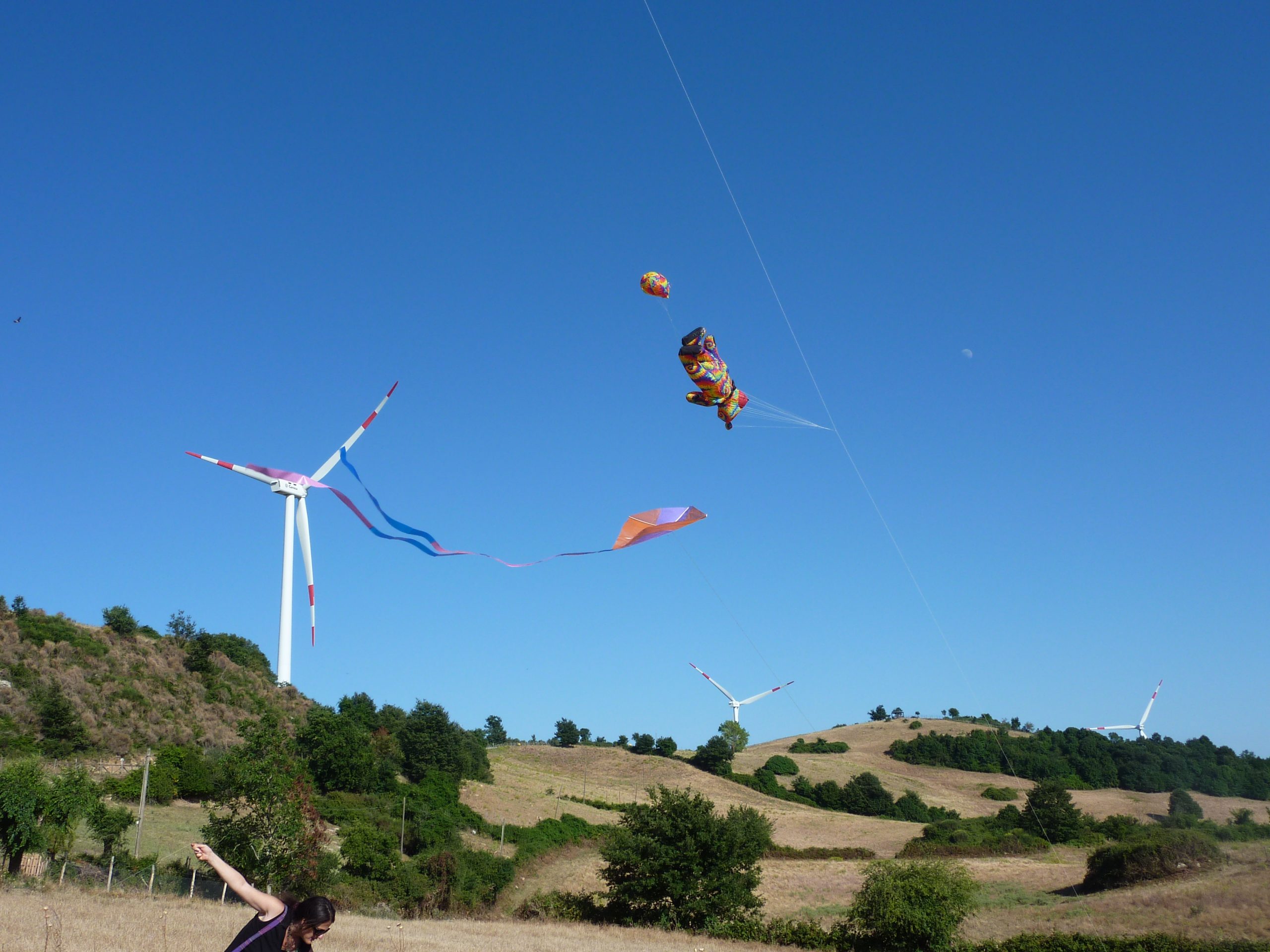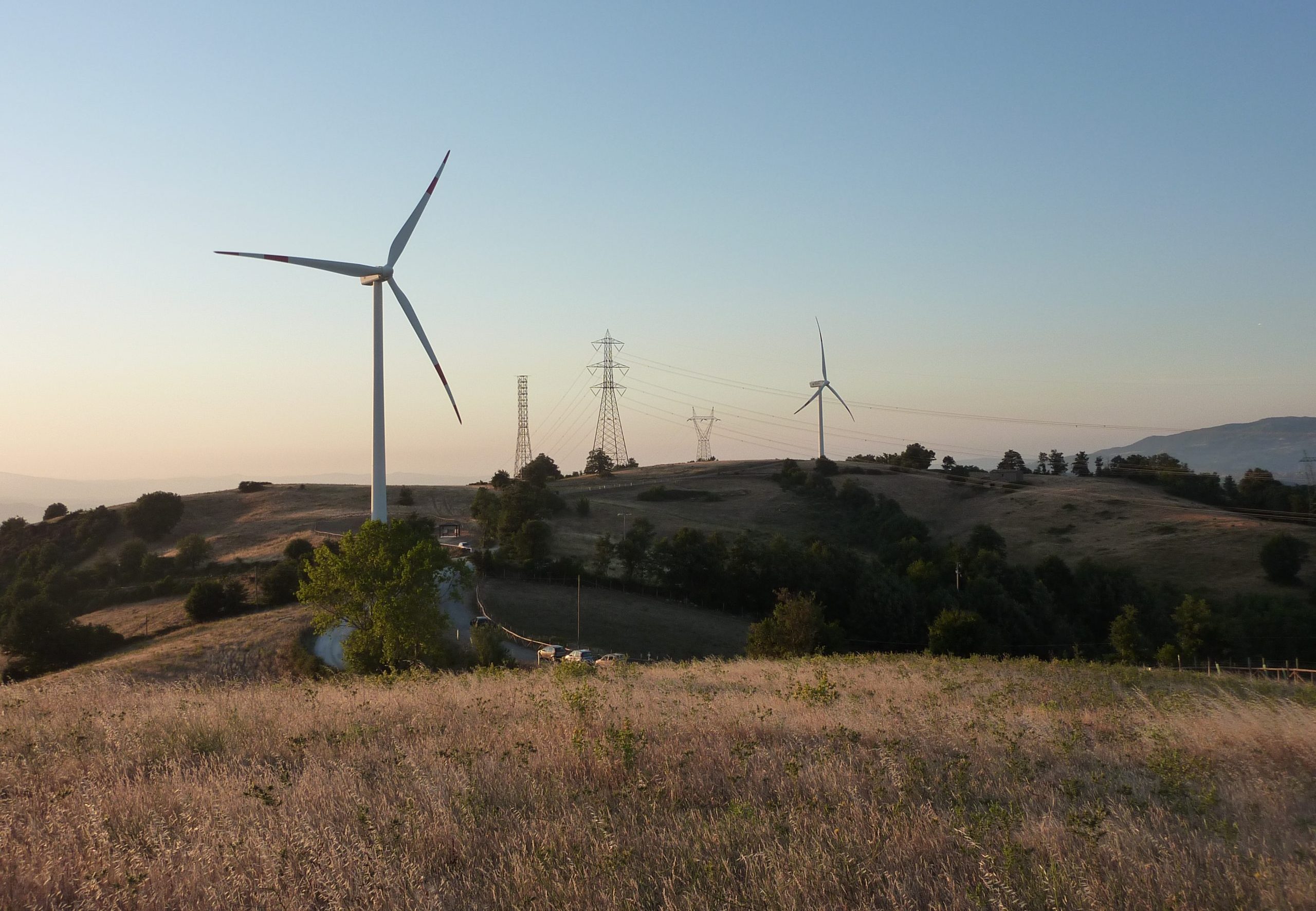Project Description
Poggi Alti

Poggi Alti

Where it is
Castles, medieval villages, fortified hamlets and tuff stone towns, built on the tops of tuff outcrops. Here we find the small municipality of Aldobrando origin – a powerful feudal family dating back to the Longobards who dominated the vast fiefdoms of Tuscany – in this magic microcosm called the Maremma, reknown for its beauty and variety. Bordered on one side by the Tyrrenhian Sea and on the other by the white peaks of Mount Amiata. Where Dante saw, in his Divina Commedia, an impenetrable and ominous land, today there are forests, natural reserves, villages, cultivated hills and thermal spa areas. In short, a small paradise that stretches between the provinces of Livorno and Grosseto. With its unique characteristics and its excellence.
| Legend |
|---|
 Wind Farm Wind Farm |
Browse the map and discover the places to visit, where to eat and where to stay, chosen by Legambiente
The hilly part between the Ombrone and Albegna Rivers crosses the Maremma, and has its symbolic epicentre in the village of Scansano, in ancient times famous as a holiday destination for the residents of Grossetto who moved there in mass for the so-called “estatura” (summer period), in order to escape the risks of malaria. Meandering through the hills, you will notice that in many parts of the Grossetto Maremma area there are traces of the Etruscan and Roman civilisations. About halfway between the Aurelia and Cassia main roads,30-40 kilometres from the sea, passes the Via Clodia, a trade rather than military route, that began to develop when the Romans started to expand their power. Today, it’s quite difficult to find traces of its elegant basal paving of more than 4 metres wide, but thanks to the thorough work establishing the Tuscan network of walking trails, you can quite easily follow some of the itineraries along what remains of this mysterious consular road.
Itineraries
One of the more interesting routes, to be done on foot or by bicycle (a MTB and GPS is advised), an ideal example of what is offered for tourists in this part of the Maremma, starts from Murci, a tiny locality of Scansano. Following the dirt roads used at one time by the shepherds of the transhumance, you find yourself under the grand turbines of the Poggi Alti wind farm, with its spectacular views of the Tyrrenhian coast.
From the farm, you can make a detour towards Pomonte and reach the basin of the Cerreto Plain, where, in the past, could be found one of the oldest mercury mines of the Maremma, or continue along the Clodia to Castello di Montepò, a beautiful fortified medieval villa, that is today owned by a winery that bought the villa from the family of the famous 20th-century writer Graham Greene. Moving on, you reach the village of Montorgiali, dominated by its castle, with its typical arched windows. At some points, you can still the crenels and corbels on which the machicolations were positioned, used for launching stones or firing arrows at assailants.
An alternate to the wind farm route is to turn away from the sea and head in the opposite direction towards the splendid little village of Montemerano, one of the most characteristic in all the Maremma. Built in the 13th century by the Aldobrando family on the highest point of the hill, it deserves a visit even if only to see the scenic Piazza del Castello with its stone houses and typical medieval layout. And, as good aficionados claim, also to sample the specialties of the legendary restaurant Caino, reign of the Michelin starred chef Valeria Piccini. Just a few kilometers from Montemerano (there is also a good track for trekking enthusiasts), you can immerse yourself in the steamy fumes of the sulphuric waters of the ancient thermal spa of Saturnia, that gush from the earth at a temperature of 37.5 °C.
According to one of the numerous legends, it was the god Saturn, who angered by human stupidity, launched a bolt of lightning at the earth creating a crater from which hot vaporous water began to flow. Whether it is true or not, it is, however, a pleasant way to end (or begin) a day.
Wine Traditions
this area is also known to be the native country of the famous Morellino di Scansano, a red wine that is one of the acknowledged excellence of the area. Made up of almost 85% Sangiovese, it is a wine whose vines have been able to take full advantage of the hills and the sea breezes, dating back to Etruscan times. “A special wine, that does not need to be aged, like Brunello di Montalcino”, recounts Alessandro Sabatini, owner for more than 20 years of the Scansano wine cellar, as well as a sort of adviser for the curious visitors passing through. “This means that you can find very different wines in the same region, from young wines matured for a short period in steel vats, and are therefore low tannin, easy on the palate, to those that have been aged in wood for up to 2 years, and become reserve wines”. Originating as a typically Maremma wine thanks to the efforts of a small group of traditional producers, still active today, the Morellino wine over the last 20 years has greatly improved in quality and, in 2007, it was granted the designation of origin DOCG and today is recognized internationally, producing about 14 million bottles per year. And keeps the traditional group of producers together, such as Erik Banti or the Mantellassi vineyard and the new modern vineyards such as those of the Terenzi family, originating from Milan.
Events in the area
Once understood how important the wine industry is for the area, it is not then difficult to imagine that one of the best times to visit the Maremma is in September, when the villages come to life with festivals dedicated to the grape. In Scansano, in the last two weekends of the month, there is the event of the “Festa dell’Uva” (Grape Festival), which has recently celebrated its 50th anniversary, with cellars in the historical center opening to the public and with the entire town festively decorated in purple. In Pitigliano, in the fantastic cantine (cellars) excavated into the tuff rock, the “Settembre di vino” event is organized, with wine-tasting and music to enliven the evenings, while in the village of Manciano, the “Festa delle Cantine” takes place. Here, besides tasting the local wines, it’s worth trying the ciaffagnoni, ancient frittatine of egg, water and flour, the forerunner of crêpes (sic). The common opinion is that this Maremma recipe, originating in about the 15th century, had circulated around Tuscany, reaching Siena and Florence, and then taken to Paris to the court of Caterina de’ Medici, who went to live in France in1533 taking her trusted cook with her. However, maybe it would be better not to mention this to our French neighbours.







